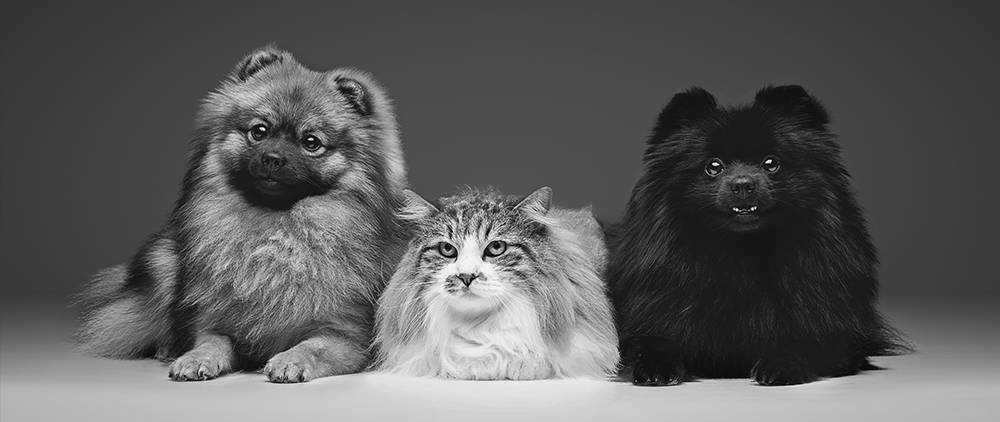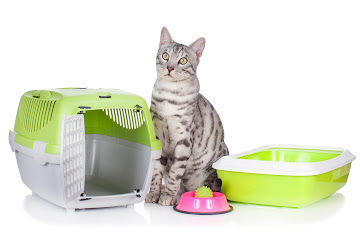Clean teeth and gums are very important parts of the overall health of your dog. Here is
some information on the most common dental problems of dogs and ways in treating them.
Dog's common dental problems
- Periodontitis
It is very common among dogs to have gum disease. At the age of two or three, many dogs have either periodontitis or gingivitis.
The most common dental problem for canines is periodontitis, also known as periodontal disease. The disease is caused by various factors: plaque, food debris, cell mucus, and a mixture of bacteria. This results to a film characterized by milky-white on the dog's teeth as well as the gums. When this film gets combined with saliva, the plaque it causes becomes tartar, and very hard to remove.
- Gingivitis
Gingivitis, also known as gum disease, happens when gum tissue suffers from an inflammation. Without treatment, it can lead to periodontitis, teeth loosening, bone less, and ultimately, loss of teeth.
- Tooth fractures
Tooth fractures occur when dogs chew hard substances, such as hard rocks and cow hooves. The fractures result to infection inside the broken tooth, which is known as the endodontic disease.
How to prevent dental problems
Your dog can fight off these dental problems by removing the plaque before it actually develops as tartar. How to do it? The most effective way is by brushing the teeth of your dog in a mechanical fashion. The brushing would reduce much of the bacteria presence in the mouth, not to mention making your dog's breath smell sweeter. Make it a habit of brushing your teeth on a daily basis.
Toothpaste. There are toothpaste products made especially for dogs. Brush your pet's teeth using dog toothpaste. Human toothpaste is specifically designed for humans to spit the paste washings out. Dogs cannot do that, so pick a dog toothpaste that is safe enough for dogs to swallow.
Toothbrush. Using a toothbrush in its teeth would take some time for the dog to get used to. Let your dog be acquainted and get used to this is by putting some garlic salt, mix the salt with water, and dip the solution in an old toothbrush. Hold the old brush, and let your pet taste and chew it. Your dog will start to realize that chewing a toothbrush is and tastes good. Make it a habit a few times, until it feels comfortable brushing with it.
Finger brush. You could also use a finger brush instead of a toothbrush. A finger brush is a good alternative, although nothing could replace the good ol' toothbrush. The finger brush just fits onto one's fingertip and can let you brush the dog's teeth without the dog knowing it. Well, at least almost. The disadvantage of getting a finger brush to clean your dog's teeth is that its bristles are quite large for the brush to go under the gumline's margin as effectively compared with regular toothbrush.
Professional cleaning. If you don't want to do the cleaning by yourself, you could take your dog to a veterinarian and have its teeth professionally cleaned. A good veterinarian will take additional measures in ensuring your dog's clean teeth by anesthetizing your dog, scraping the buildup of plaque from all over the gumline areas, and polishing the teeth for a sparkling finish.
Home checkup. Try to make it a regular habit of checking the teeth of your dog for any cracked or broken teeth. If you see some problematic teeth, check promptly with the veterinarian.
Home safety. Of course, cleaning your dog's teeth does not mean you should disregard other areas of concern. Tough substances, such as bones, rocks, hard nylon, or cow hooves should be removed from areas where your dog could see. Buy your dog chewing toys that are safer like rubber-made toys. You could also provide bones that are soft enough for your dog to chew.
Mouthwash. There are some products in the market that deal very well in helping to kill the bacteria in your dog's mouth and could actually help heal damaged gum tissues. Do not forget to ask your veterinarian on the best products in the market.
Dental problems do not only happen to humans. Dogs also have dental issues as well. It is up to the owners on how to help their pet dogs overcome their dental problems.
Join our Facebook Group: https://www.facebook.com/groups/wearewhiskersclub
27 January 2022
Tips For Taking Care Of Your Dog's Teeth And Gums
24 January 2022
7 Quick And Easy Ways To Solve Your Cat Litter Problem!
Has this ever
happened to you? Your cat's peeing outside the litter box, and you're
desperately trying to clean up after your cat, wondering if you're
actually doing anything to stop it from happening in the first place!
Well,
if you're like me, you probably want some quick solutions to the
problem, or at least a list of checkpoints that you know you must, like a
detective on a trail, work through, to get the litter box behavior
problem under control.
By the time you finish this article, you
will have learnt the 7 most important steps you must know, when it comes
to this problem of the cat peeing outside the litter box.
Firstly, let's have a look at the reasons why this happens. The reasons for peeing outside the litter box are:
1. A medical problem.
2. The cat that has never been properly house trained to use the litter box in the first place.
3. Problems with the litter tray itself.
4. An unpleasant event that occurred while the cat was at the litter box.
5.
A temporary physical or emotional stress, or change in the household
causing the cat to urinate in an area outside the box, which is
perpetuated by the urine smell reminding the cat to return to the same
area over and over again.
6. Old age causing a cat to not be easily able to get to the litter box.
Now, keep these causes in mind, when checking out the 7 action steps:
1.
If there's a change in toilet behavior with no obvious cause, it may be
caused by illnesses such as urinary tract infections, blocked anal
glands, worms and parasites, diabetes and tumors. These illnesses may
have no other obvious signs, apart from this urination problem. So you
must consider a visit to the vet. In other cases you may see symptoms
such as lethargy, blood in the urine, diarrhea, or constant licking in
the anal area. If you see this, then your first stop is the vet!
2.
Look at the litter box itself. Ensure you're cleaning out the waste
once or twice a day, and changing the litter every 3-4 days for
non-clumping litter (2-3 weeks for clumping litter). Clean the tray with
hot water and mild detergent, without any strong odors such as citrus
or ammonia, which will repel the cat from the box. If you have multiple
cats, remember - the number of trays should equal number of cats, plus
one or two. If you've changed brands of litter, this may have caused the
problem as many cats dislike this change, especially to scented litter.
Return to the older litter. If you want to change, introduce unscented
litter gradually by mixing the old with the new over 2 weeks. And ensure
that the location of the box is acceptable: no loud noises, has some
privacy, and is not in view of other cats.
3. Consider adding in 1
more litter box to another suitable private location of the house. This
is because sometimes it's not the litter box that's the problem, but a
negative experience there. For example, if your kids played with the cat
while she was on the litter box, or if the cat had pain when urinating,
such as during a urine infection, after having kittens, or had a
procedure done on the bladder or urethra at the vet, then the cat would
associate pain with that litter box. Even if the pain is gone, the
association and is still there.
4. Thoroughly clean the area that
has been peed on. This is important because no matter what the cause,
the fact that the urine remains on the bed, carpet, or sofa is a
reminder for the cat to return to pee there. The cat's sense of smell is
more acute than ours, so ensure you clean with a solution such as
Brampton's Simple Solution. If you have remaining urine smell together
with a bad association at the box, then you have 2 forces causing the
problem to continue. So get rid of both!
5. Next, if possible,
deny the cat access to the area that is peed on, especially if it's an
area that is repeatedly used. Many people forget to do this, and their
problem is prolonged. By stopping access, the cycle of repeated
urination is stopped. Will the cat pee somewhere else? Possible, though
less likely if you provide a second litter box, show him where it is a
few times, and also do the step 7 below.
6. If you can't stop the
cat from accessing the area, make the area less attractive for peeing
instead. You can do this by either placing a scent, or, by placing a
bowl of dried cat food there. If using a scent, try citrus or
eucalyptus. If using dried food, which often works better, ensure that
you top up the food bowl during the day. Either way, once you have
success, continue for another 1-2 weeks to ensure it stays that way.
7.
If you're at home when the cat is, then you have this step up your
sleeve as well: the startle technique. Only do this method if you
actually catch the cat about to urinate because if you do it at any
other time, that cat will not be able to associate that urinating in the
area with the unpleasant startle. Startle the cat with a loud "No!" or
clap of the hands. Wait 5 minutes, then bring the cat to the litter
tray, and if she toilets at the tray, reward her with praise and a food
treat. As long as the length and enjoyment of the reward if far greater
than the startle, this will be unlikely to cause stress. Use this method
carefully as some cats may experience stress with it. Make sure that
the cat seems relaxed after the food treat, and that it's actually
improving the situation.
If you follow the above steps, most
problems of peeing outside the litter box will be solved within days or
gradually improve over 1-2 weeks.
Remember in all cases, you'll
be even more effective if you reduce stress at the same time. This means
more play time and attention.
In conclusion, it does take some
effort and detective work to see what has caused the litter box behavior
problem in the first place. And you now know how to apply 7 essential
steps to help you solve this issue, as quickly and effectively as
possible.
Join our Facebook Group: https://www.facebook.com/groups/wearewhiskersclub
About
Popular Posts
-
Leather earrings for women are a versatile and stylish accessory for various occasions. Leather earrings for women come in various styles,...
-
Understanding Upper Respiratory Infection in Cats Protecting Your Feline's Health Introduction Cats are known for their independent an...
-
Kennel Cough: Understanding, Preventing, and Treating Canine Infectious Tracheobronchitis Kennel Cough, also known as canine infectious ...
Categories
Blog Archive
- August 2023 (2)
- July 2023 (1)
- June 2023 (4)
- May 2023 (4)
- April 2023 (1)
- February 2022 (1)
- January 2022 (2)
Download The FREE Guide

A Guide Of Toxic & Safe Human Foods For Your Pets










